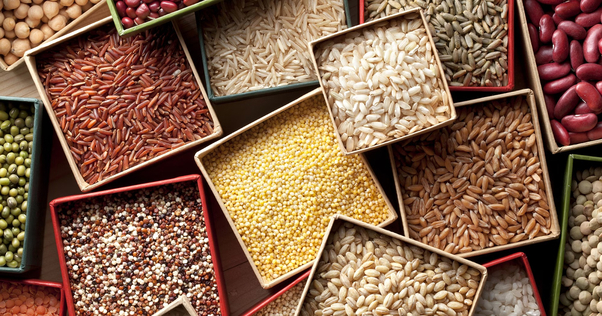Benefits of Including Millets in Daily Diet
Incorporating millet into your diet regularly has health benefits. The grain millet can withstand droughts and needs minimal upkeep. Consumer interest is growing despite the fact that it is usually used to feed livestock. This grain is versatile in the kitchen and has several health benefits.
What Are the Health Benefits of Millet?
Millet is a good source of the vital elements phosphorus, fiber, protein, potassium, magnesium, copper, and manganese. Also, it includes a range of antioxidants that are good for your health, including saponins, anthocyanins, lignans, and flavonoids. Millet is excellent for those with celiac disease or gluten intolerance since it is gluten-free. It is well known that eating millet food products has several advantages for individuals of all ages.
Why Millets Are Regarded as a Staple Food:
Enhances Blood Sugar Balancing
Millet regulates blood sugar levels due to its low glycemic index. The glycemic index is a metric for evaluating foods that include carbohydrates. It demonstrates the degree to which the food will affect your blood sugar.
Your blood sugar will rise after eating anything that contains swiftly digesting carbs. Always include low-GI items in your diet for a balanced dinner, such as millet. When it comes to helping diabetics prevent a sharp rise in blood sugar, millet can be pretty helpful.
Promotes Weight Loss
The fact that millet lowers BMI is well established. Given its low-calorie content and extraordinary concentration of magnesium, bioactive compounds, fiber, minerals, and vitamins, millet should play a significant role in your weight loss program. You may lose weight by including this gluten-free grain in your diet and staying active frequently.
Improves Heart Condition
The antioxidants in millet include anthocyanidins, beta-glucans, policosanols, tannins, flavonoids, and lignans, to name a few. By reducing your LDL cholesterol, they assist you in maintaining healthy blood arteries, dissolve clots, and minimize your risk of heart disease or stroke.
Combats Cancer Cells
It has been shown that the peroxidase in foxtail millet may prevent the growth of colon cancer cells while not harming healthy cells or inhibiting the formation of breast and liver malignant cells.
Facilitates Digestion
The dietary fibers in millet are known to regulate bowel movements in addition to avoiding constipation, cramping, bloating, and gas. This improves the functioning of your kidneys, immunological system, and liver.
Improves Bone Density
As it includes vital vitamins and minerals including iron, zinc, manganese, potassium, magnesium, copper, and calcium, millet is a proven nutritional powerhouse for bone strength. Although consuming millet on occasion won’t harm your bones, including it in your regular diet might be advantageous.
Improves the Function of Your Cardiovascular System
Magnesium controls the beat of your heart. Moreover, millet has enough magnesium to support a healthy cardiac rhythm, raise the protein adiponectin, and protect the cardiovascular system’s tissues. It also contains vitamins that are beneficial for decreasing high cholesterol, which has an effect on the health of your heart.
Anti-Aging Properties
When amino acids like L-proline and L-lysine are present, they help make collagen, which gives the tissues of your skin their structure. If you start eating millet more frequently, your body will produce more collagen. You won’t age as a consequence, and your skin will become more supple and free of wrinkles.
Keeps You Full for Longer
Since rice and wheat are simple carbs that the body can readily break down and metabolize, people typically experience post-meal hunger. It could cause some people to turn to improper eating practices to sate their hunger. Millets help people avoid forming bad eating habits because of their more complex structure and the fact that it takes the body longer to break them down.
Types of Millets
Sorghum
In India, sorghum is typically referred to as jowar. Jowar was traditionally used as a grain for making rotis and flatbreads. Since it includes a compound known as policosanols, the grain known as jowar, which is high in iron, protein, and fiber, lowers cholesterol levels. It fulfills individuals who are allergic to wheat.
Finger Millet
Rice and wheat are substituted with finger millet ragi as a healthy option. Without a doubt, ragi is a nutritious powerhouse. This millet, which is gluten-free and high in protein and amino acids, is good for kids’ developing brains.
Foxtail Millet
The iron and calcium in foxtail millet, which is widely used to make semolina and rice flour, help to strengthen the body’s defensive mechanisms. This millet also provides healthy blood sugar-balancing carbohydrates.
Pearl Millet or Bajra
Many benefits of this millet for health have been established. This millet, which is high in iron, protein, fiber, and minerals like calcium and magnesium, may work wonders if consumed regularly or included in a diet.
Barnyard Millet
The high fiber content of this nutrient-dense millet can significantly aid weight loss. It contains significant amounts of calcium and phosphorus, which, when regularly ingested, promote bone formation and guard against bone diseases.
Proso Millet
This grain can be used to maintain healthy blood sugar levels. It has a low glycemic index, making it a favorite among weight watchers. It has long been a mainstay of bird food in India.
Little millet
Tiny millets are a great source of calcium, iron, zinc, potassium, and B vitamins. These essential components can help in weight loss. It may be discovered in many South Indian cuisines. Due to its high fiber content, it is also a healthier choice than rice.


